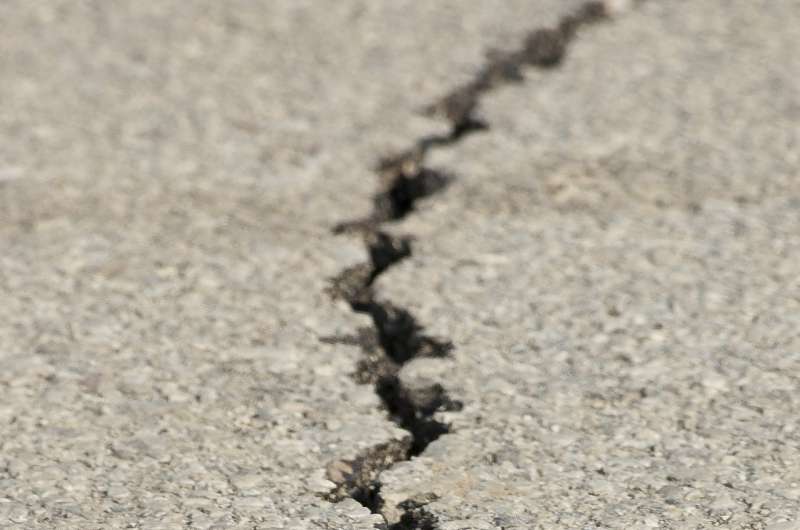This article has been reviewed according to Science X's editorial process and policies. Editors have highlighted the following attributes while ensuring the content's credibility:
fact-checked
trusted source
proofread
Q&A: What to make of the earthquake that rattled the Northeast

The 4.8 magnitude earthquake that shook the Northeast on April 5 didn't seem to cause much damage, but it was enough to send tremors of concern through anyone who felt it. It's not that the region never experiences seismic shifts. It's just that most earthquakes in the region go undetected.
Professor Laurie Baise is the chair of the Department of Civil and Environmental Engineering at the School of Engineering. As lead investigator in the Geohazards Research Lab, she explores the dangers that come with earthquakes and extreme wind and develops models to predict the damage they cause. As people in New Jersey—where the earthquake was centered—and surrounding states asked each other, "Was that what I think it was?" Baise spoke with Tufts Now about the rumblings.
Earthquakes are relatively rare on the East Coast. How are we different from the West Coast?
Laurie Baise: Most earthquakes are caused by plate tectonics. The West Coast, including California and the Pacific Northwest, sits on active plate boundaries: The Pacific Plate is moving relative to the North American Plate along the coast of California and the Juan do Fuca Plate is subducting beneath the North American Plate in the Pacific Northwest.
On the other hand, the Northeast is within the stable continent and the closest plate boundary is the Mid-Atlantic Ridge in the middle of the Atlantic Ocean.
Is this earthquake unusual or significant for the region?
This earthquake is unusual for this region but not unexpected. The last similar earthquake was in 2002 in northern New York. It had a moment magnitude of 5.1.
This part of the country does not have high earthquake hazards, but we do have earthquakes. A magnitude 4.8 or 5 earthquake is consistent with the type of earthquake that buildings are designed for in this region.
At what magnitude does damage start—and should we be ready for more? Does research indicate that earthquakes will be increasing?
Besides earthquakes due to wastewater injection, earthquake hazards are relatively stable.
A magnitude 5 earthquake is felt at the surface and can lead to some damage in the area near the epicenter. Whether a building is damaged is highly dependent on building construction and the soil conditions beneath the site.
Your research involves predictive models and seismic hazard mapping. How could that be useful for the Northeast?
I am interested in improving earthquake hazard maps for the Northeast. Due to the geologic history of New England, the surface materials range from hard bedrock to soft soils. These conditions can lead to strong amplification of seismic waves in urban areas, which are often underlain by soft soils.
Using field measurements and surficial geology maps [that show the distribution of loose surface materials such as sand, gravel, and clay], we have developed maps for New England that can be used to predict locations where soils will amplify seismic waves. These maps can be used in scenario development as we plan for future earthquakes in the region.
Provided by Tufts University





















